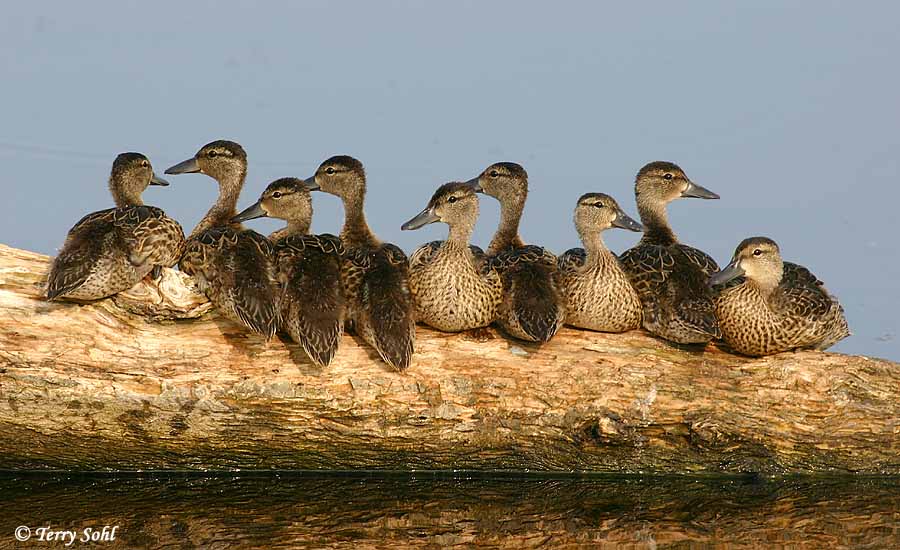Reproduction: How did they get here?

The Mallard will chose its mate in the fall
before they migrate to warmer climates. Breeding does not take
place until they migrate back from their winter dwelling.
The Mallard reproduces sexually, and will usually lay anywhere
from 8 to 14 eggs in one season. The use of the
amniotic egg is a very important
adaptation for the survival
of this terrestrial animal. The eggs do not require the use of
water or any other nutrients (besides heat) until they hatch.
The gestation period is about 30 days for Mallards. The newly
hatched ducklings can swim almost immediately, but cannot fly
for around 60 days.
The Mallard has also been know to breed with other species that
are closely related to it, and can actually produce viable
offspring. This has led to numerous hybrids within the anas
genus.
The nest is often no more than just a small hollow in the
ground, lined with reeds, weeds, and some of the down from the
female's breast. However, Mallard nests have been found as high
as twenty-five feet off the ground in heavily wooded areas. The
nesting area is often chosen based on available cover and safety
from predators, and its accessibility to water so the female can
lead her ducklings to it easily after hatching.